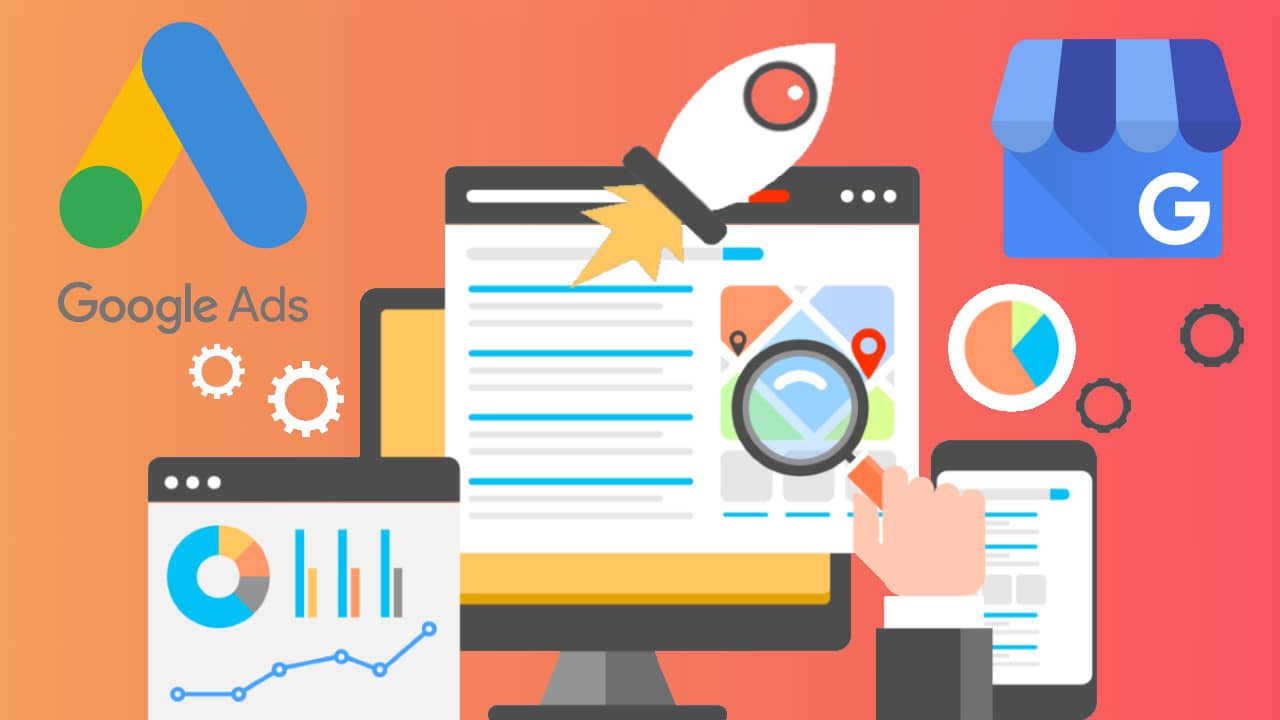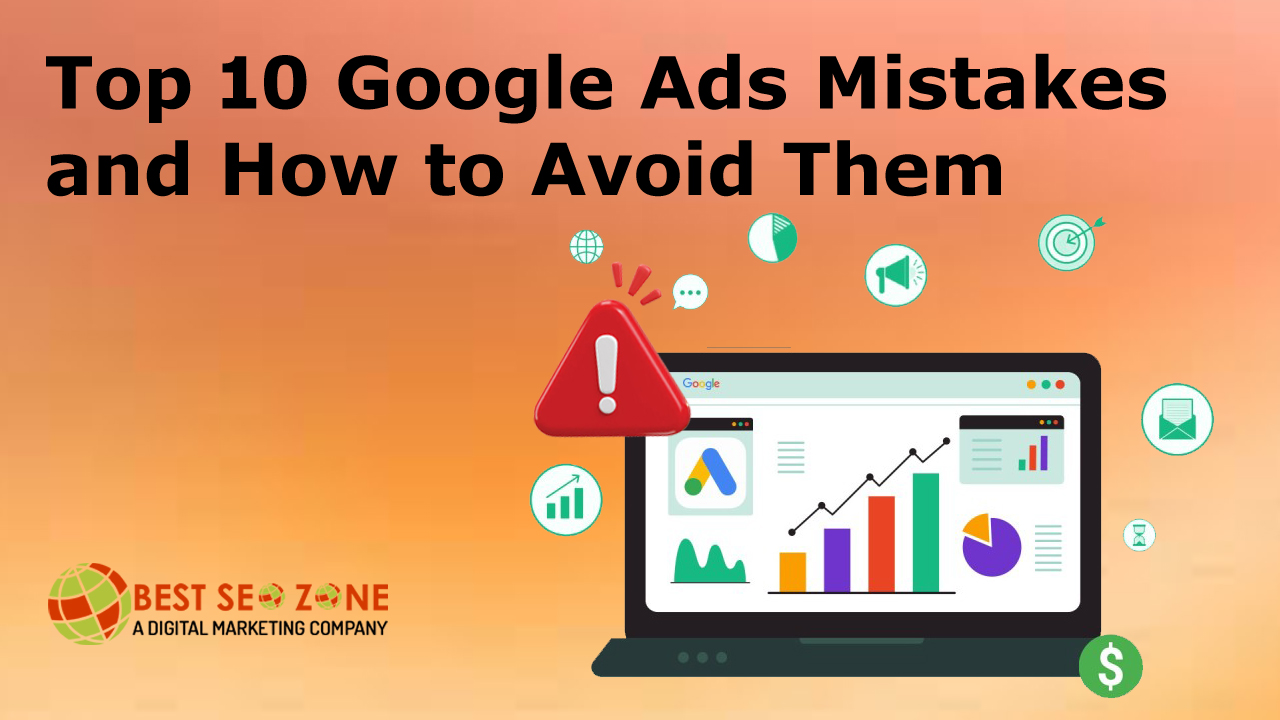Google Ads is one of the most powerful digital marketing platforms available today billion search happen every day it gives business a direct way to appear in front of customer at the exact moment they are searching for a product or service. Unlike traditional advertising where you pay for exposure regardless of result Google Ads operate on a pay-per-click (PPC) model meaning you only pay when someone interact with your ad.
However while the potential is huge many businesses fail to unlock it.A poorly managed campaign can quickly turn into a money drain where the budget disappear but meaningful results never appear.This usually happen because advertisers both beginner and sometime even experienced marketers fall into a common trap.They overspend on broad keyword write weak ad copy or neglect conversion tracking leaving their campaign running inefficiently.
The good news is that these mistake are avoidable.By understanding them and applying a smarter strategy you can transform your Google Ads from a cost center into a growth engine.Below are the 10 most common mistake in Google Ads along with the recommended strategy to fix them and maximize your ROI.
Table of Contents
1. Skipping Keyword Research Shooting in the Dark
Launching Google Ads campaigns campaigns without conducting proper keyword research is one of the most common and costly mistakes advertisers make.Imagine putting up a billboard in the middle of a desert people might eventually see it but the chances of reaching your target audience are almost zero.In the context of digital advertising skipping keyword research is just as ineffective it waste your budget and lowers campaign performance.
Why This Is a Problem
- Irrelevant Ad Traffic without research your ads may appear for search terms that have no connection to your product or service.For example if you sell premium running shoes but target only the keyword shoes your ad could show for cheap kids shoes or unrelated searches.These clicks drain your budget without producing conversions.
- Missed Opportunity your competitor might already be dominating high-intent and profitable keywords.Failing to identify these mean you miss out on potential customer who are ready to buy.
- Lower ROI targeting generic or broad keyword typically attracts lower-quality traffic.Even if people click on your ad they may not convert into lead or sales reducing your overall return on investment (ROI).
- Difficulty in Campaign Structuring keyword are the foundation of your campaign.Without proper research it is challenging to organize an ad group write relevant ad copy or design a landing page that aligns with user intent
Recommended Strategy Invest time in keyword research using tools like Google Keyword Planner SEMrush or Ahrefs.Go beyond generic terms like shoes and focus on specific intent-driven keywords such as buy men’s running shoes online.These longer-tail keywords may have lower volume but bring in higher-quality traffic that’s closer to making a purchase decision.
2. Ignoring Negative Keywords Paying for Irrelevant Clicks
In Google Ads every click costs money.Not all clicks however are equally valuable.Some may come from users who have no real interest in your product or service.Ignoring negative keywords is one of the most common mistakes advertisers make and it can quickly drain your budget without generating meaningful results.
Think of it like running a store and letting random passersby into your shop who have no intention of buying anything.You are spending resources to attract people who are unlikely to convert and in Google Ads those irrelevant clicks are literally costing you money.
Why This Mistake Happens
- Ads Show for Unrelated Search without a negative keyword your ads may appear for search queries that have nothing to do with your business.For example if you sell a luxury watch but fail to block keywords like cheap watch or free watch you attract user looking for low-cost alternative instead of high-value buyer.
- Wasted Budget each irrelevant click adds to your cost-per-click (CPC) but bring zero return.Over time these wasted click can consume a large portion of your budget.
- Lower ROI spending on irrelevant traffic reduces overall return on ad spend (ROAS) because fewer of the click lead to actual conversions.
- Reduced Campaign Efficiency Ads appearing for the wrong audience distort data making it harder to identify which keyword and campaign are actually profitable.
- Poor Ad Relevance showing your ads for unrelated search can hurt your quality score which in turn increase CPC and reduce ad visibility.
- Difficulty Optimizing Campaigns Without negative keyword it is challenging to fine-tune your campaign or focus on high-performing search term.
- Audience Confusion User who click on irrelevant ad may feel misled which can hurt your brand reputation and increase bounce rate
Recommended Strategy Build and maintain a strong negative keyword list.Regularly review your search term report and exclude irrelevant querie.This ensures your ads reach only qualified prospects who align with your offer protecting your budget from unnecessary spend.
3. Writing Boring Ad Copy Losing Clicks to Competitors
Ad copy is often the deciding factor in whether a user click on your ad or a competitor.Generic keyword stuffed ads that lack creativity fail to capture attention especially in competitive industry.Even if your ad appear at the top of search result uninspired messaging can lead user to choose another option wasting click and ad spend.Strong ad copy not only grab attention but also communicate value and relevance immediately increasing the likelihood of engagement and conversion.
Recommended Strategy Focus on writing ad copy that directly address customer need and clearly highlight your unique value proposition.Use persuasive calls-to-action (CTAs) like Get 20% Off Today or Book a Free Consultation to motivate user to act.Additionally to implement A/B testing by creating multiple ad variation to determine which messaging resonate best with your target audience.Continuously refining ad copy based on performance data ensure your campaign remain compelling and effective over time

4. Forgetting Ad Extensions Missing Free Real Estate
Ad extensions enhance your ads by adding extra information such as sitelinks callouts promotions or phone numbers. They increase visibility credibility and click-through rates. Ignoring extensions makes your ads appear smaller and less engaging compared to competitors. Using them strategically can improve your Quality Score reduce costs and attract more qualified clicks. Regularly update and test extensions to ensure they align with your ad message and drive results.
- Use sitelinks to promote key pages: Shop Pricing Contact.
- Add callouts highlighting benefits like “24/7 Support” or “Free Returns.”
- Enable call extensions for mobile users to call directly.
- Use structured snippets for products or services.
- Apply promotion extensions for discounts or special deals.
- Test which extensions drive the highest engagement.
- Keep extensions consistent with the ad’s message and offer.
5. Poor Landing Page Experience Traffic Without Conversions
Driving click is only part of the battle. If your landing page is slow irrelevant or cluttered users will leave without converting. Many advertisers make the mistake of sending traffic to a homepage which is too broad and fail to align with the ad’s promise.
1. Slow Loading Pages
A landing page that take too long to load frustrate users and increase bounce rate.Even a delay of a few second can cause potential customer to leave losing valuable click. Optimizing page speed is essential for keeping visitor engaged and improving conversion.
2. Irrelevant Content
Many advertiser send traffic to generic homepage or unrelated page.If the content does not align with the ads message users may feel confused or misled and leave immediately.Each landing page should be tailored to reflect the specific offer promoted in the ad.
3. Cluttered Design
Overcrowded page with too many visual link or message can overwhelm visitor and distract from the primary goal.A clean organized layout help user focu on the intended action and increas the likelihood of conversion.
4. Lack of Mobile Optimization
With most user browsing via mobile device a landing page that is not mobile-friendly result in poor user experience.Page should be responsive load quickly and display correctly on all screen size to capture mobile traffic effectively.
5. Weak Call-to-Action (CTA)
Without a clear prominent CTA user may not know what action to take next.Every landing page should have a single focused CTA such as Buy Now Sign Up Today or Book a Free Consultation guiding visitors toward completing the desired action
6. Not Tracking Conversions Flying Blind
Measuring click and impression alone does not give the full picture of your campaign effective.Many advertiser focus on the number of people clicking their ads assuming that high traffic equals success.In reality click are just the first step what matter most is whether those visitor take meaningful action like making a purchase signing up for a newsletter or filling out a contact form.
Without conversion tracking it is impossible to know which ads keyword or campaign are actually generating result.You might be spending money on ads that attract traffic but do not lead to any revenue or qualified lead.This make optimization difficult as there no clear data to guide decision.
Not tracking conversions is like running a store and counting how many people enter without checking who actually buys something.You may have a lot of foot traffic but without understanding which action drive revenue your campaign remain inefficient. Over time this lack of insight can lead to wasted budget and missed opportunity for growth.
Conversion tracking is essential for understanding campaign performance measuring ROI and making informed decision. Without it all advertising effort are essentially operating in the dark
7. Setting and Forgetting Campaigns No Optimization
Many advertisers make the mistake of setting up a Google Ads campaign and then leaving it unattended assuming it will perform automatically. In reality Google Ads is a dynamic platform where consumer behavior competitor actions and Google’s algorithms change constantly. Without regular monitoring and optimization campaigns can underperform over time wasting budget and missing opportunities to reach high-intent customers.
Neglecting optimization often results in paying for clicks that don’t convert while you miss out on insights about which ad copy keywords or audience segments are driving results. Over time this “set it and forget it” approach can significantly reduce ROI and campaign efficiency.
Key Actions to Improve Campaign Performance:
- Review performance metric regularly including CTR CPC conversion rate and ROAS.
- Pause underperforming ads and reallocate budget to top-performing campaign.
- Refresh ad copy and experiment with new format like responsive search or display ads.
Successful Google Ads campaign is data driven and continuously monitoring testing and refining campaign you can maintain efficiency reduce wasted spend and ensure your ads consistently reach the right audience
8. Broad Match Overuse Casting Too Wide a Net
Using broad match keywords without caution can backfire by attracting clicks from users who aren’t actually interested in your product or service. For instance if you bid on a broad term like “digital marketing” your ad could appear for searches like “free digital marketing courses” or “digital marketing jobs” which may have nothing to do with the premium services you offer. This not only wastes budget but also skews your performance data making it harder to measure true ROI.
Relying too heavily on broad match is like casting a fishing net without checking the waters you might catch something useful but most of it is irrelevant. The key is to target smarter not wider. Combine precise match types like exact and phrase match with carefully monitored modified broad match. Regularly analyze search term report to identify irrelevant query prune wasted click and focus your budget on search that are most likely to convert. Over time this approach ensure your ads reach the right audience while controlling cost and maximizing result.
9. Focusing Only on Clicks Forgetting ROI
In digital advertising the ultimate goal is conversion not clicks. A smaller number of highly targeted clicks that lead to purchases or qualified lead is far more valuable than large volumes of irrelevant traffic. By analyzing metric beyond click such as cost per acquisition (CPA) return on ad spend (ROAS) and customer lifetime value (CLV) advertisers can understand the real performance of their campaigns and make data-driven decision to improve ROI High click-through rates (CTR) look impressive but they do not guarantee sales or lead.
- Celebrating click alone may make a campaign appear successful while it fails to deliver real business results.
- Focus on metric that reflect actual revenue not just engagement.
- Track how much you spend to acquire each customer to understand campaign efficiency.
- Determine the revenue generated relative to your ad spend to identify profitable campaigns.
- Understand the long-term value each customer brings not just immediate sales.
- Allocate budget to campaigns keywords and audiences that generate actual results rather than just clicks.
- A campaign with fewer clicks but higher conversions is far more valuable than one with large traffic and low or no sales.
10. Ignoring Audience Targeting Missing the Mark
Keywords show what people are searching for but they don’t reveal who is searching. Without audience targeting your ads may reach users who have no intention or ability to purchase resulting in wasted impressions and budget.Simply put you could be speaking to the wrong crowd while your ideal customer never see your message.
To truly maximize campaign effective it is crucial to layer audience insight on top of your keyword strategy.This mean identifying specific group based on demographics interest or past interaction.For example remarketing allows you to reconnect with user who previously visited your site demographic filter help focus on age or income bracket and in-market audiences let you target people actively looking for product like your. By combining these layer your campaign become far more precise ensuring your ads reach the people most likely to engage and convert.

Dilshad Mushtaq is the founder and CEO of Best SEO Zone which is a prominent digital marketing agency based in Pakistan Since 2010. He is a professional website developer & Digital Marketer who can create any website and rank it on Google Page One.




